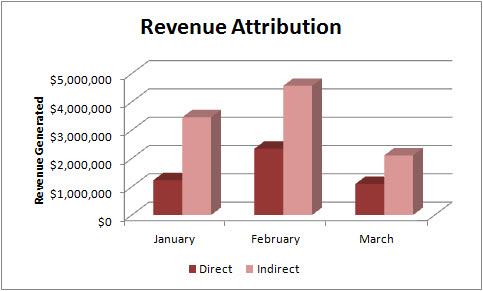How can you prove that your email marketing is effective?
That the the starting point for a discussion I had with a colleague last month. His organization does email marketing on behalf of their clients and one client in particular was looking for quantitative proof that the benefit justified the cost.
Should be a simple questEion — but the problem was that the vendor was having a difficult time proving it. Everyone, including their key contact on the client side, felt certain the email marketing efforts were moving the needle. But the numbers they pulled to support this weren’t telling the same story.
Our discussion made me think of this article from 2013 about attribution models… Enjoy!
Use these key elements of attribution models to ensure your email marketing, social, advertising and other initiatives are valued correctly.
In my last column, I provided a very simple data tree model for tracking behavior from the send through conversion. It’s a good model, but the truth is that things aren’t quite so simple in the real world.
In the real world, not all buyers will click directly from your e-mail to the website and purchase. Some might open your e-mail and make a mental note about the offer, then visit the site later in the week and buy. For others, it may take some combination of touch points, say an e-mail followed by a banner ad – or two – to convince them to purchase from your site.
Most experienced marketers agree that only attributing sales which follow immediately from a click understates e-mail’s contribution to your bottom line. But that begs the question: what type of attribution model can you use to get closer to reality?
There are many different attribution models in use today. Why not just one standard, you may ask? Well, you want to tailor the model based on your sales cycle and other elements, which are specific to your industry and/or your business. To help you get started, here are the key elements of attribution models with notes on how they are most commonly used.
Attributing for Types of Action
For e-mail, most models require a click for attribution to be considered. The feeling is that if an e-mail doesn’t move the reader to click, it’s not a strong enough message to justify giving it credit for the sale.
That said, there are some models which are based on an open or, even broader, just an e-mail being sent and not bouncing, to qualify the message for attribution. The broader the model, the more likely it is that you’ll be overstating e-mail’s contribution to your bottom line. You may also see attribution models overlapping each other, meaning that multiple channels each take full credit for a single sale.
Timeframe to Align With Your Sales Cycle
Most models rely on a one or two week window for attribution from e-mail. This is based on a cookie placed when the reader clicks through from an e-mail to the website. There are models which utilize longer timeframes; one client I’m working with now uses a 30 day window.
The longer your window, the longer it will be before you can tabulate the full results of your campaign. There is no single ‘correct’ timeframe for all models; your timeframe should be determined taking into account the average length of your sales cycle.
First/Last Marketing Touch Point
An additional element of many attribution models is touch point. Some multi-channel models only take into consideration the first or final touch, for example:
Buyer clicked on an e-mail about the product on April 12th, clicked on a banner ad about the product on April 14th and purchased the product on April 16th. In a first touch model, this sale would be attributed to e-mail; in a final touch model it would be attributed to the banner ad.
Final touch point models are more prevalent than first touch models.
In reality, the combination of the two may have been what drove the sale; the e-mail or the banner ad alone might not have been enough. This is the inherent margin of error that exists in any attribution model that seeks to tie a purchase to a single channel.
The way I usually address this is a two-tier attribution model, which recognizes both direct and indirect/influence levels based on the following criteria.
This model recognizes the influence that e-mail (or other channels) can have on sales, even if another channel gets direct credit for attribution.
If you’re using an attribution model that only takes into account sales immediately following a click, you’re probably understating e-mail’s contribution to your bottom line. Take some time this week to think about how you might build a more sophisticated and realistic attribution model. Then put it in place and let me know how it goes!








